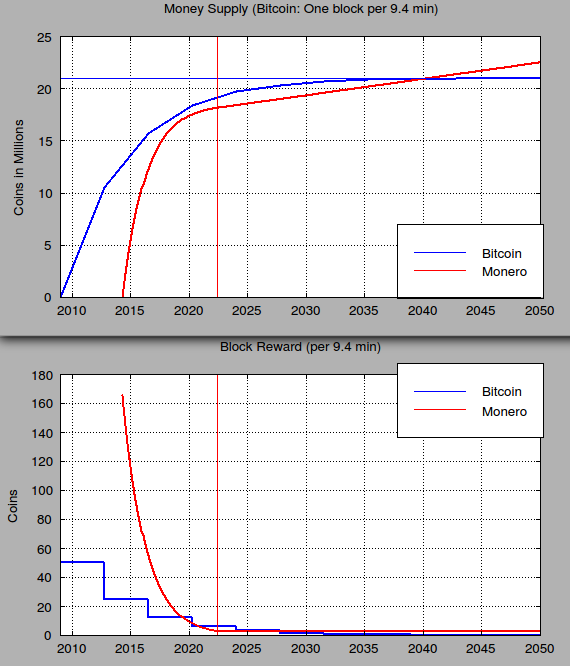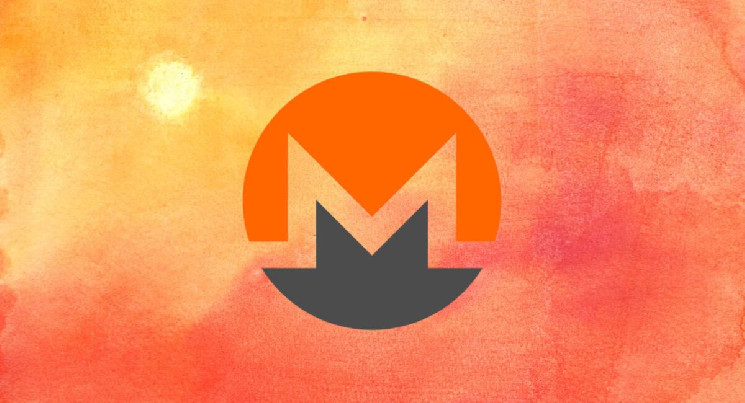Key highlights:
- Different cryptocurrencies have different approaches to managing the creation of new coins
- Monero developers have opted for a more gradual approach compared to Bitcoin halvings
- In May of 2022, Monero will enter the tail emission phase
The world of cryptocurrency is incredibly diverse and crypto projects have taken a number of approaches when it comes to determining how new coins are created. For example, Bitcoin has a maximum supply cap of 21 million coins and the rate at which new BTC enters circulation is cut in half with a Bitcoin halving, which happens every 4 years. So, even though more than 18 million BTC have already been mined in a little over 10 years, the 21 millionth Bitcoin will be mined somewhere around the year 2140.
Bitcoin’s approach is not the only valid option. In Dash, for example, the block reward drops by about 7% every 383 days.
In this article, we’ll be focusing our attention on Monero, the most popular privacy coin on the market today. Monero also has a mechanism for decreasing the issuance of new XMR over time, but uses a relatively unique approach. While there is no such thing as the Monero halving, the Monero protocol still has a mechanism in which the amount of XMR coins issued is gradually reduced over time.
What is Monero?
Before we take a closer look at Monero's supply dynamics, let's learn a little bit more about this fascinating cryptocurrency project.
Basic Monero information:
- Launched in 2014
- Proof-of-work cryptocurrency
- The most popular privacy coin on the market
- ASIC-resistant
Monero is a privacy-focused cryptocurrency that made its debut on the market in 2014. Its consensus mechanism is conceptually similar to that of Bitcoin, as Monero also uses Proof-of-Work to achieve consensus. However, Monero implements measures to prevent mining with specialized ASIC chips (ASIC stands for application-specific integrated circuits).
Unlike Bitcoin, Monero can be mined profitably with consumer-grade computer hardware. Ethereum's RandomX PoW algorithm is designed to be especially efficient when mined with CPUs (central processing units), which means that anyone with a reasonably powerful computer can mine Monero.
While those with access to more powerful CPUs still have an advantage, mining Monero is still much more accessible than mining cryptocurrencies which aren't ASIC-resistant. ASIC mining rigs cost several thousand dollar each, and can perform no useful work other than mining crypto.
The Monero project is highly dedicated to privacy, and all transactions made with XMR are fully private. Outside observers can't see the addresses or amounts involved in any Monero transaction. The Monero cryptocurrency achieves this high degree of privacy through a range of technologies, including Stealth Addresses, Ring Signatures and RingCT. An added benefit of Monero being private is that XMR coins are completely fungible.
Buy/Sell Monero (XMR)
Monero "halving" explained
Like Bitcoin, Monero is a proof-of-work cryptocurrency, which means that Monero miners need to deploy their computer hardware to solve resource-intensive mathematical problems in order to have a chance of adding the next block to the Monero blockchain and reaping the associated block reward. Monero is designed so that a new block is added to the Monero blockchain approximately every two minutes.
Monero mining
While Monero is a proof-of-work coin, it has plenty of unique aspects. To start off with, Monero is a bit different from most other Proof-of-Work coins since it has no cap on its maximum supply. While Monero’s maximum supply is technically infinite, this doesn’t have much of an impact from a practical standpoint – you’ll understand why this is the case soon.
Also, Monero’s RandomX proof-of-work algorithm is specifically designed to deter ASIC miners, which means that Monero can be mined effectively with consumer-grade computer hardware. This algorithm was designed to be particularly efficient for users who are mining with their computer’s CPU (central processing unit).
So, is there such a thing as the Monero halving?
In short, no. But as we mentioned previously, Monero does have a mechanism to gradually slow down the rate at which XMR coins are being created. As of May 2022, Monero has entered a state of "tail emission", which means that the block reward is fixed at 0.6 XMR in perpetuity. Assuming a block time of 2 minutes, this means that about 432 XMR are being created on a daily basis from that point forward, and this will stay the case unless the Monero protocol is modified. At the time of writing, the number of XMR coins in circulation is 18.14 million.
Monero will always have some inflation (although the inflation rate will be decreasing over time), but it will help keep the Monero network more secure by continuing to provide an incentive for miners beyond just transaction fees. Cryptocurrencies with a capped supply, for example Bitcoin, might encounter problems in the future when miners will have to primarily rely on transaction fees to finance their operations.
Monero tail emission vs Bitcoin halving
Unlike Monero, some cryptocurrencies such as Bitcoin will eventually become deflationary, with no new coins being created and the effective supply shrinking over time due to users losing access to their coins.
This scenario might be attractive for price speculators at first glance, but there is a risk that transaction fees alone will simply not be enough to incentivize miners to provide an adequate amount of hashrate. Such a scenario would hurt the security of the Bitcoin network, which could also translate in a drop in the value of BTC.
With each Bitcoin halving, miners have to rely on an increase either in the price of Bitcoin or the demand for transacting on the Bitcoin network in order for mining to remain profitable. Otherwise, some miners are forced to stop mining, which results in lower overall hashrate and consequently weaker security of the Bitcoin network.
You can visualize Monero’s time emission better with this helpful chart comparing the supply dynamics of Monero and Bitcoin provided by Reddit user u/Amichateur:

 coincodex.com
coincodex.com
